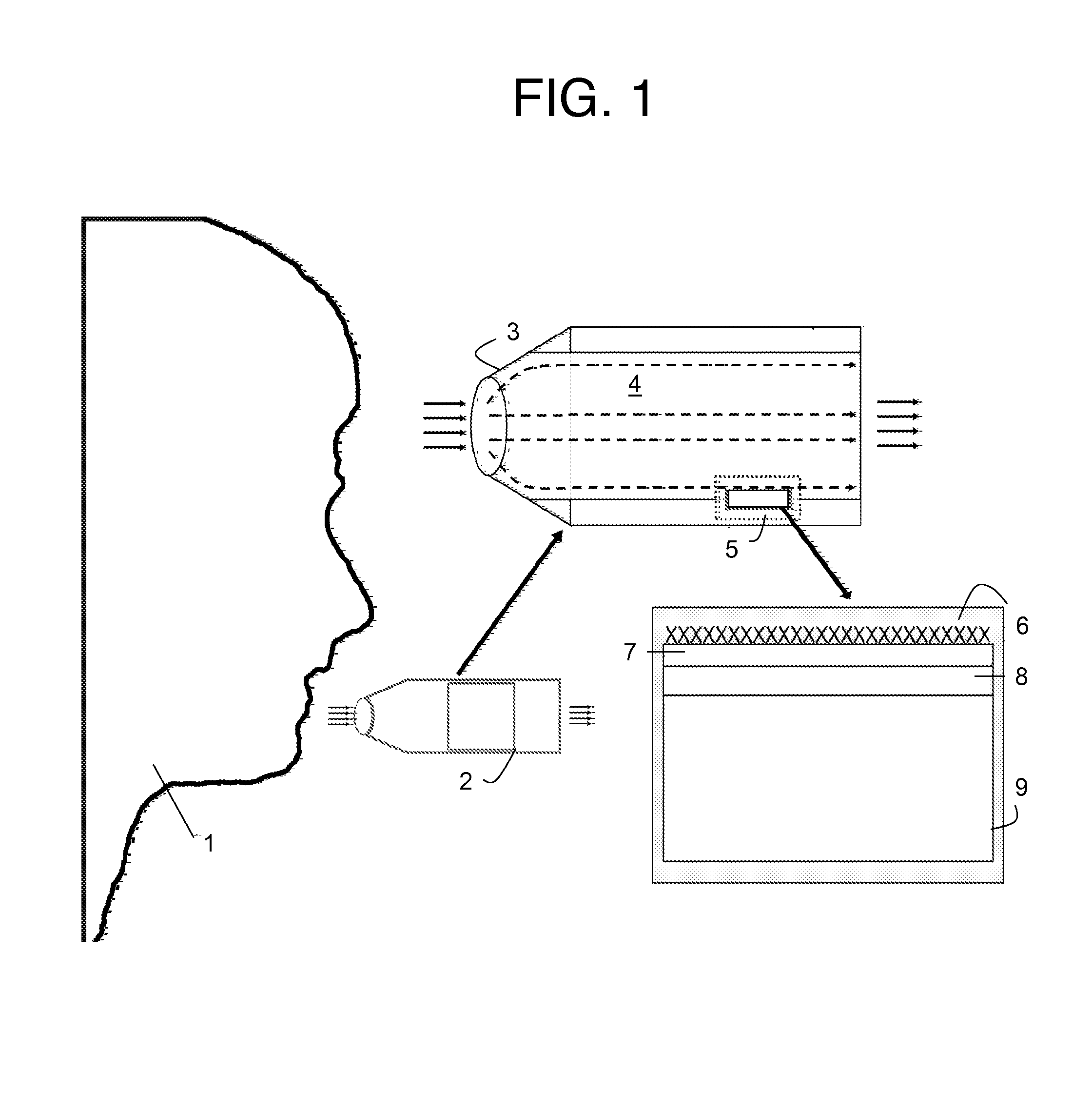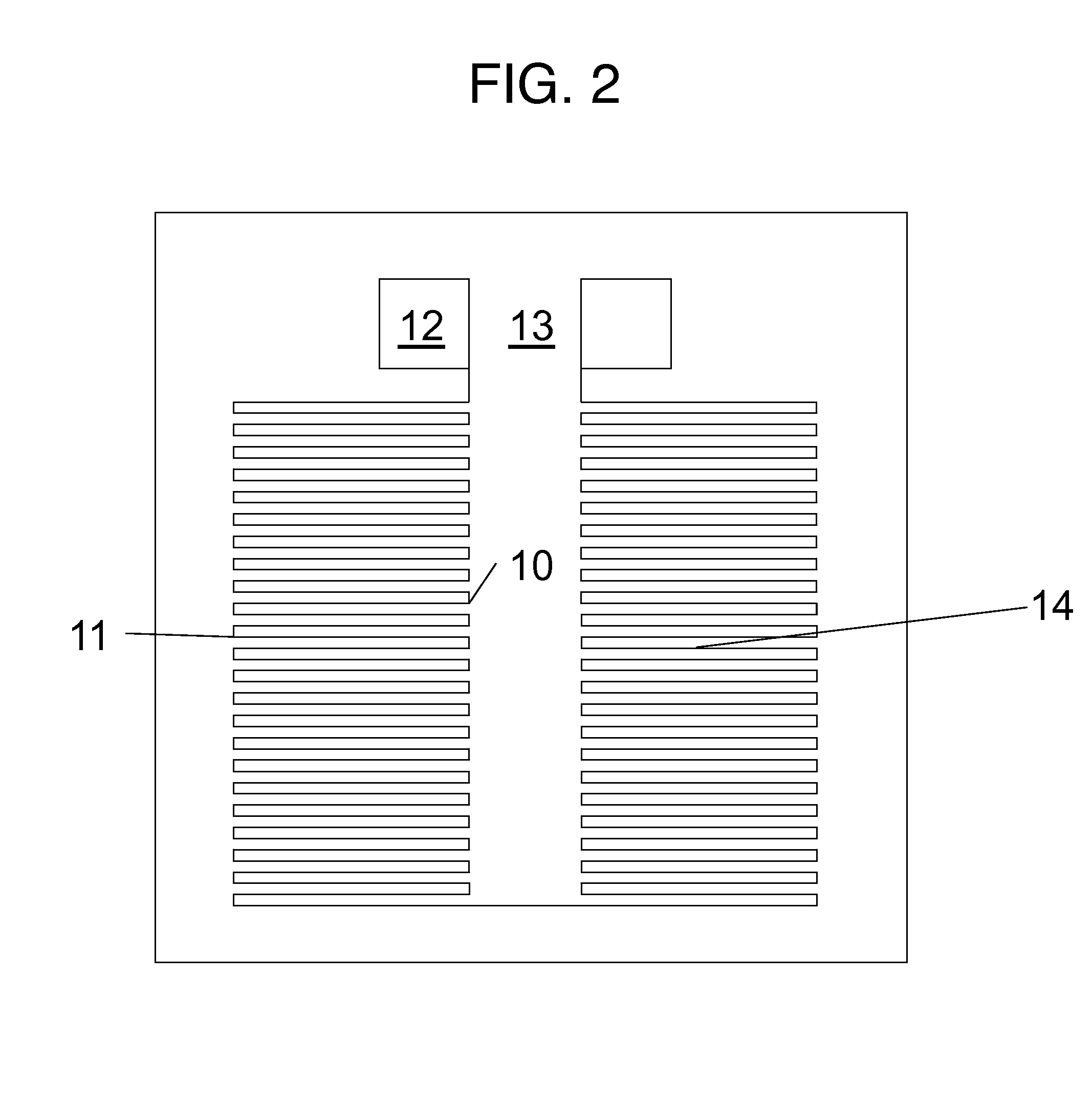Thermoelectric sensor for analytes in a gas and related method
a technology of thermoelectric sensor and analytes, applied in the field of apparatus and methods for sensing analytes in fluids, can solve the problems of inability to fully realize the full potential of blood chemistry, laborious, painful blood analysis, etc., and achieve the effect of improving the accuracy of blood tests, and improving the accuracy of blood chemistry
- Summary
- Abstract
- Description
- Claims
- Application Information
AI Technical Summary
Benefits of technology
Problems solved by technology
Method used
Image
Examples
example 1
[0276]FIG. 54 shows an embodiment that utilizes a pyroelectric detector 435. The analyte 437 passes through a conduit and interacts with an analyte interactant 432 which is immobilized on a test strip 431. The test strip 431 is passed through the conduit by a mechanism 434, such as a gear, motor, etc, and is guided by a strip director 433. The output of the pyroelectric detector 435 is processed by a signal processing unit 436. As a general matter, the response of thermal sensors is improved by use of thin-film materials. In some instances, if the expected signal is large, the magnitude of the signal is perhaps not an issue. However, the thermal time constant (i.e. the response time) is typically impacted if the heat capacity is high. Accordingly, under most circumstances, it is desirable to employ thin-film materials. With this type of test strip embodiment, to ensure good thermal contact, it is desirable if the test strip is in good mechanical contact with the sensor.
[0277]A speci...
example 2
[0283]In this example, a thermal sensor for oligosaccharide detection is described. Oligosaccharides (“glycans”) are associated with various pathologies, including cancer. These oligosaccharides may be found on the periphery of the cell on the glycocalyx. They also may be found free flowing in blood attached to biomolecules such as proteins. During disease states, the concentration of glycans may increase, the structure of the oligosaccharide may be modified or altered, or neoexpression of certain glycans may occur. Accordingly, measuring glycans can serve as tremendous biomarkers.
[0284]Although sugars are well-known as the “third language of life” (genomics, proteomics, glycomics), because glycoscience is an emerging field, it is important to understand why it is important to measure glycans. First, in some instances, glycans have served as biomarkers where other disease markers have not been identified or are limited (e.g. in multiple sclerosis). Second, many papers have shown tha...
PUM
 Login to View More
Login to View More Abstract
Description
Claims
Application Information
 Login to View More
Login to View More - R&D
- Intellectual Property
- Life Sciences
- Materials
- Tech Scout
- Unparalleled Data Quality
- Higher Quality Content
- 60% Fewer Hallucinations
Browse by: Latest US Patents, China's latest patents, Technical Efficacy Thesaurus, Application Domain, Technology Topic, Popular Technical Reports.
© 2025 PatSnap. All rights reserved.Legal|Privacy policy|Modern Slavery Act Transparency Statement|Sitemap|About US| Contact US: help@patsnap.com



